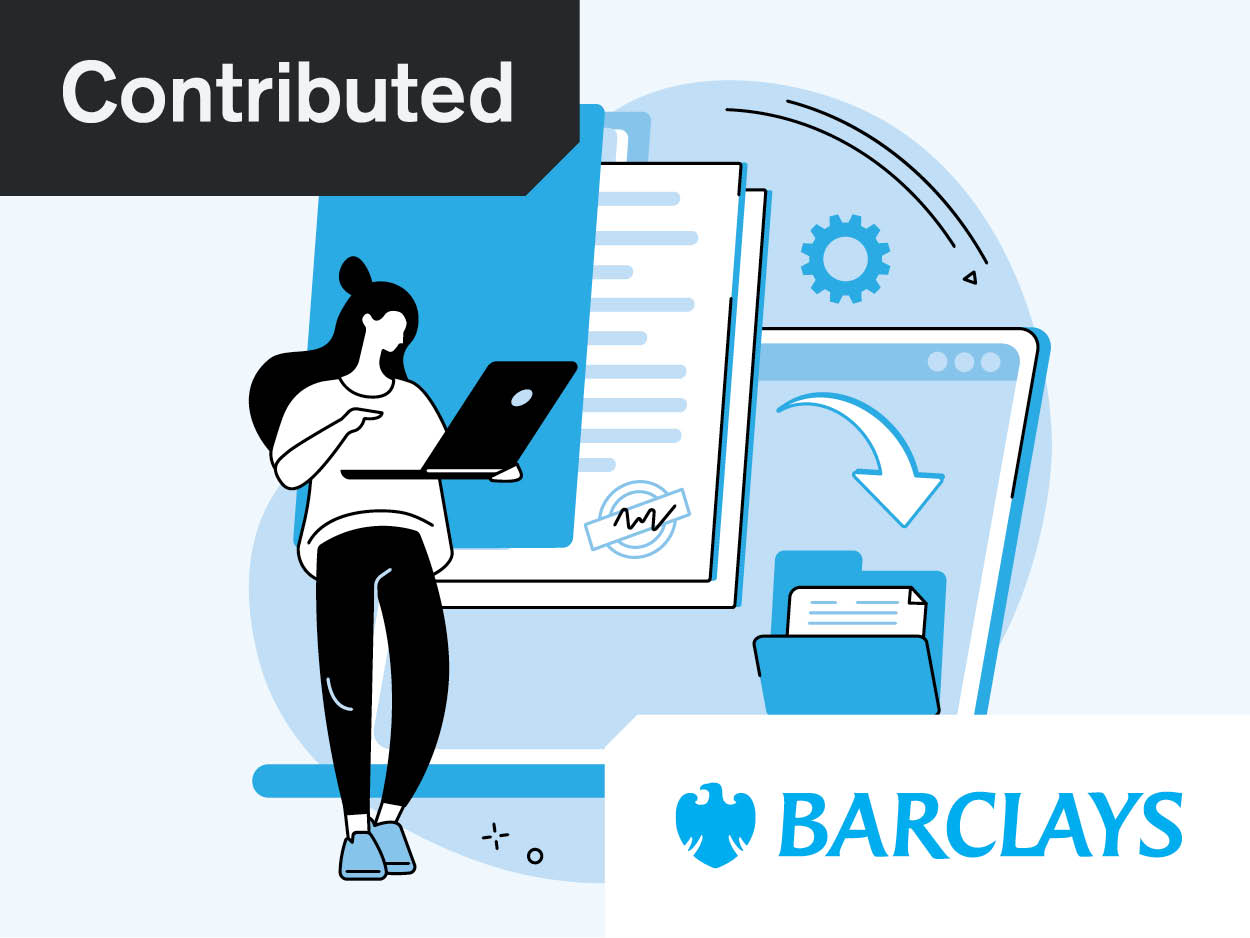As momentum builds around the UK’s digital trade transformation, this roundtable brought together voices from government, banking and technology to discuss how the industry can move from strategy to execution. With the Electronic Trade Documents Act now in force, the conversation explored how public and private stakeholders can align around shared priorities, accelerate adoption and avoid digitising inefficiencies.
Roundtable participants:
- Jaya Vohra, global head of trade & working capital product and client management, Barclays
- Patrick De Vilbiss, head of product – trade and supply chain finance, CGI
- Minhaj K-A Minhaj, innovation lead, Chief Technology & Design Office, HM Revenue & Customs (HMRC)
- Shannon Manders, editorial director, GTR (moderator)
GTR: The International Chamber of Commerce’s ‘Roadmap to digitalise UK trade’, initiated by the Trade Digitalisation Taskforce and developed with input from co-chair Barclays, provides clear recommendations for government, business and platforms, aimed at transforming the UK’s trade ecosystem. These recommendations focus on removing legal barriers, standardising data and fostering collaboration between public and private sectors to enable seamless digital trade. From where you sit – whether in government, banking or tech infrastructure – what’s the most urgent priority to unlock real progress in 2025?
Vohra: I think the roadmap is a great tool because it brings together clear recommendations for different parties across the trade ecosystem. It outlines the role of government in leading and incentivising change, the ICC and Digital Standards Initiative (DSI) as catalysts given their infrastructure and resources, and also calls on large buyers and suppliers to use their influence across the supply chain. This is a cross-industry transformation, and no single player can drive it alone.
The next step is aligning on shared goals and roles across all parties. In terms of priorities, rather than trying to boil the ocean, we should focus on two or three tangible outcomes, agree on timelines, and take a phased approach to deliver them. If we can interlock on that, we’ll be in a strong position to take the first step.
DeVilbiss: A couple of things. One, to Jaya’s point, this kind of roadmap is really important for the industry because one of the key challenges in trade is the sheer number of actors involved in any given transaction. That complexity is part of what’s slowed progress. Having organisations like the ICC produce clear, accessible insights is mission-critical, especially for smaller players or those less connected who may not even be aware of what’s happening in the market. They need that guidance to feel confident investing and participating; otherwise, they risk being left behind in an ecosystem that depends on broad collaboration.
On the tangible side, Jaya made a strong point: focus on what you can deliver in the near term. For us as a technology enabler, that means starting with a real, defined customer problem, not a theoretical use case or flashy bit of tech. Talk to your customers, identify their pain points, and build targeted solutions. For example, solving for digital workflows around import or export letters of credit (LCs) – something manageable and focused – creates a foundation you can build on.
The other point I’d highlight is the importance of common standards, frameworks, and interoperability. This isn’t about chasing a perfect solution. You still need to be able to execute, test use cases, and solve real problems without getting caught up in theoretical ideals. But as systems become more connected, interoperability becomes critical. One of our biggest concerns is the technical debt that can build up when linking different parties. Thanks to cloud infrastructure and lower integration costs, it’s easier than ever to connect systems – but if everything is bespoke, the cost of maintaining those connections quickly becomes unsustainable.
That’s where common standards are essential. The ICC has done a great job pulling together what’s already out there rather than creating more standards. A good example is the Swift and ICC Application Programming Interfaces (API) standards on guarantees and standby LCs released in 2023. It’s a practical, community-driven set of APIs that can be reused across the industry. Having a shared standard like that allows for consistency and scale, whether you’re building for a multi-bank platform or a single customer.
Minhaj: Let me list three priority areas from our side. First, we need to focus on adopting what already exists. The Electronic Trade Documents Act (ETDA) 2023 is a prime example. It’s in place – we’re currently exploring the opportunities of using this. Second, we should leverage developments in digital identity for organisations. That includes considering evolving technologies like verifiable legal entity identifiers (LEIs) and aligning with strategic government initiatives such as the Cabinet Office’s One Login programme, which has an organisational ID element. And finally, it would be remiss not to mention AI. We should be exploring how developments in generative AI, particularly agentic AI, can be applied to trade digitalisation.
GTR: Jaya, as co-chair of the Trade Digitalisation Taskforce, how is the group evolving from producing those recommendations to now supporting tangible implementation? What can we expect in its next phase?
Vohra: The taskforce was originally set up to develop recommendations for government on a number of priority areas: Basel 3.1, fraud and risk, trade digitalisation, and improving financial crime process efficiency. Having the Department for Business and Trade (DBT) at the table as a partner has been key in enabling the kind of cross-industry dialogue needed to shape meaningful, practical recommendations.
We’ve had in-depth discussions around both the opportunities and the barriers stakeholders face across the end-to-end trade ecosystem. As a result, the final recommendations reflect a shared position from across the group. While the taskforce’s initial remit was focused on producing these recommendations, we’ve been actively reviewing how we transition into an implementation-focused phase.
There are still a few areas to complete, including finalising recommendations on KYC, digital identities, and improving financial crime processes. We also need to conclude discussions on e-invoicing and a potential UK trade registry and move towards implementation on that.
Looking ahead, we are focused on identifying which aspects of digital trade will deliver the most tangible commercial and efficiency benefits for the UK economy. There are many digital solutions available, but we need to align on two or three clear priorities where immediate, coordinated action is possible. That is where I see the taskforce heading, and those conversations are already underway. The structure of the group may evolve, but our goal remains the same. Continued DBT support is essential. Their involvement will help bring stakeholders together and drive consensus around those starting points.
Finally, we need to keep corporate adoption front and centre. Around 80% of global trade is conducted on open account terms, without documents passing through banks. That makes corporate buy-in a major factor. If we want to scale digital trade, we need to make adoption easier for corporates by building infrastructure that is efficient and, ideally, centrally run. That way, companies are not left to do their own due diligence or source individual tech solutions. Creating a practical, efficient implementation plan is where we aim to take the taskforce next.
GTR: Patrick, what are you seeing from corporates and financial institutions in terms of digital trade adoption? Are there particular areas where CGI is helping clients navigate complexity or shift from pilot to scale?
DeVilbiss: This is an area where, as an industry, we’ve long hoped for quicker progress, but over the past two years or so, momentum has picked up. There is clear corporate demand, but what’s really shifted is the banks’ approach. They’re now much more comfortable moving beyond traditional proof-of-concepts and pilots. The mindset has shifted to: ‘I’ve got a real problem today, I’m working with a corporate, and I need a digital, API-driven solution to address it.’
It’s less about creating noise and more about delivering something practical. The data is already there – the focus now is on how to use it meaningfully.
I’d break this into three broad buckets, which could help frame how we think about implementation and scale.
The first area is where you’ve got pre-established, networked platforms that already have agreements in place, often operating as multi-bank channels. We’re definitely seeing growth here. We have a number of projects underway where data is flowing directly from these platforms into CGI Trade360, creating a true end-to-end digital workflow for clients. This is happening across both open account and traditional trade, and the momentum is building.
Banks are increasingly enthusiastic about these models. We’re seeing strong interest, particularly on the standby LC and guarantee side, though there’s also traction on commercial LCs.
The second area is around direct engagement between banks and their corporate clients. We’ve built API solutions that allow banks to connect straight to corporates, bypassing traditional processing channels. This has seen strong uptake, particularly in the domestic guarantee and standby space, where demand continues to grow. As more parts of the business become digitised, this model will likely expand further. These are full end-to-end data flows – not physical documents – which makes the experience faster and more efficient.
Connected to that is the focus on digital document solutions. We’ve been in conversations with several platform providers proposing ideas such as using Digital Container Shipping Association (DCSA) API standards to create a generic API – there’s a lot of interest in that.
Looking ahead to 2030, there’s a wider industry push – led by the DCSA and supported by the ICC and Future of International Trade (FIT) Alliance – for full adoption of electronic bills of lading by that year. What was once seen as bespoke and complex is now moving toward standardisation and regular use.
That ties into the ICC’s work around critical trade documents. If we can identify and extract key fields from these documents in a digital format – even if the full document still exists on paper – it gets us much closer to a functional digital trade environment.
The final area is around UNCITRAL Model Law on Electronic Transferable Records (MLETR)-based open networks. Some of these platforms overlap with others I’ve mentioned, but the key distinction is that they offer a true end-to-end digital channel. We’re involved in initiatives where banks are looking to introduce a layer that’s MLETR-compliant and can support more complex, multi-party workflows – not just bilateral exchanges. This allows for the digital transmission of document ownership in a legally recognised and operationally scalable way.
It’s encouraging to see this space becoming more standardised and accessible. More players – beyond the global banks – are exploring and engaging with these open network models, which is a positive sign for widespread adoption.
Vohra: I’d like to second Patrick’s point on standby LCs and guarantees. A lot of the industry conversation around digital trade tends to focus on negotiable instruments under the ETDA, but there is also significant potential for digitalisation in the guarantee and standby LC space.
We are seeing growing demand for digital guarantees in countries like Spain and India, where e-issuance is becoming more common. These are typically straightforward, two-party transactions, which makes them well-suited for digital adoption.
In the UK, many banks issue to the same set of beneficiaries, creating a level of consistency that could make implementation even more efficient. This is a clear area where we can drive meaningful progress.
Minhaj: I’d like to add that digital documents, for example guarantees, promissory notes etc, may bring benefits to all the parties in a supply chain. In some cases, businesses are required to provide a guarantee to customs against duties owed. Streamlining that process digitally could simplify things for businesses and also create efficiencies for the other parties.
GTR: In the Spring Statement, the UK government highlighted customs digitalisation as a key focus, with specific reference to the ETDA. From an HMRC perspective, what opportunities do you see to build on existing initiatives to streamline customs processes, improve tax reporting and support more effective compliance and fraud prevention?
Minhaj: You’ll likely be aware of HMRC’s multi-year programme, Making Tax Digital, which has already delivered several benefits, both internally to
HMRC and externally for businesses. We now have the opportunity to build upon that foundation, using not only lessons learned but also some of the principles outlined in the OECD’s Tax Administration 3.0 framework. These should be seen as a guiding reference rather than a fixed blueprint.
The focus here is on leveraging external technological developments – not building new services from scratch. By relying more on data that already exists, there’s a real opportunity to improve tax and customs reporting and to streamline the business experience overall.
This ties into Patrick’s point around MLETR. Customs digitalisation is something I’m particularly interested in, especially in the context of the ETDA. As the first G7 country to adopt the Act, the UK has taken a lead. In the Spring 2025 tax update on simplification, administration and reform, customs digitalisation was highlighted as a key focus area. The Act was mentioned explicitly, and there is now a collaborative effort underway to explore how it can be more widely adopted and integrated into HMRC’s internal processes, including compliance and risk assessment.
Another area of focus is organisational identity and how it can support businesses operating across jurisdictions – for instance, those active in both the UK and the EU or US. The aim is to find ways to streamline cross-border activity through better identity frameworks.
Finally, I’d point to the e-invoicing consultation, which closed on May 7, and was jointly led by DBT and HMRC. It provided an opportunity for industry to feed back on how e-invoicing could work in the UK. There’s currently no mandated standard or requirement for electronic invoicing, but this consultation will help inform future policy. It explored a range of models aiming to gather industry views on the potential benefits of standardised e-invoicing. While the outcome is still pending, the expectation is that it could reduce administrative burdens and help tackle invoice fraud.
Vohra: We’ve had discussions within the taskforce about whether to recommend mandating tools like e-invoicing or digital identities. If the UK ends up not mandating adoption, then we need to think seriously about how to incentivise it – whether through clear business benefits or other incentives that make it worthwhile for companies to get on board.
GTR: Where is Barclays seeing the strongest appetite for digital adoption among its clients? And where do blockers still persist – whether technological, regulatory or cultural?
Vohra: When we think about the biggest opportunities – whether for our clients or ourselves as a bank – it’s really around automation and removing inefficiencies. We’ve been on a transformation journey for the past four years, working with CGI as our trade platform partner and investing in Trade Ledger for our working capital products. This has laid the foundation for long-term innovation through a resilient SaaS-based platform that allows us to connect externally and adopt APIs like those mentioned earlier.
A major focus is automating internal tasks. In trade, it’s not just about receiving documents but what you do with them, and much of that is still manual. So we’re prioritising automation for those everyday processes, while also co-creating solutions with clients and tech partners to ensure what we build is scalable and valuable.
That said, we don’t automate with a paper trail in the background. We’re actively moving toward solutions that help digitise not only internal workflows but also the wider trade experience for clients. We haven’t seen specific roadblocks, but we also haven’t seen significant demand around ETDA use cases, which highlights a key issue: businesses cannot digitalise trade in isolation. We need coordinated industry action and a common implementation approach that we can collectively take to clients.
GTR: How can public-private partnerships be structured or scaled to move from strategic alignment to real execution? What would effective collaboration between government bodies, enforcement agencies and the private sector look like in practice?
Vohra: The first thing I’d like to see is agreement on those common objectives. We may not be able to tackle 10 issues at once, but as an industry we could realistically take on three or four. Beyond that, there are some key technical and legal challenges that will need to be addressed collectively.
For example, when it comes to data sharing between banks and government departments, there are clear concerns around data privacy and the infrastructure needed to support that kind of exchange. Similarly, on digital identities and KYC, the taskforce has often discussed the potential for a common infrastructure that could handle base-level KYC checks – something all financial institutions could then build on according to their own risk frameworks. But to make that happen, we would need the right technology, a strong regulatory framework and a clear process for due diligence.
These aren’t just tech issues – they involve legal and compliance considerations that the wider ecosystem needs to work through. That’s why it’s so important to align on a few focused objectives, bring in the right stakeholders, including legal and regulatory experts, and use the taskforce as a platform to shape a credible, collaborative plan.
Minhaj: There’s a concept of an innovation ecosystem from the Massachusetts Institute of Technology that says successful innovation requires participation from multiple stakeholders, including corporates, institutions, SMEs, academia and government, amongst others. The OECD’s Observatory of Public Sector Innovation also has a government-specific framework. At HMRC, we’re already collaborating with businesses and traders on electronic trade adoption through the ICC’s reliable systems group. That approach is working well and includes partnerships with universities, which not only measure outcomes independently but also bring fresh thinking to the table.
We’re also involved in an EU-funded project exploring how internet of things data can support the physical assurance of goods at the border. That’s an example of how emerging technologies can support more secure and efficient trade processes.
On the topic of data and infrastructure sharing, Jaya rightly raised important points. Technological capabilities already exist. For example, cloud platforms can support selective data sharing. The challenge lies in establishing the right legal and governance frameworks behind them.
There are several initiatives aimed at building a secure and federated data infrastructure to enable trusted data sharing across sectors. They offer a potential model for how shared infrastructure between banks, businesses and government could work in practice.
DeVilbiss: One of the clearest opportunities in public-private partnerships – particularly from the government perspective – is in areas where businesses already carry a regulatory or compliance burden. That might be collecting tax against invoices or performing due diligence on counterparties. These are responsibilities placed on organisations by the government, so there’s a real chance to create efficiency by working together on frameworks and solutions that reduce the cost of doing business while maintaining confidence across all participants. That’s where partnerships can be especially powerful. They can streamline these responsibilities and, in doing so, help boost productivity.
The other key opportunity is around adoption and endorsement of standards. There’s a lot in the market and it can get confusing. Having the ICC behind a standard is helpful, but when a government body also says, ‘this is something you should be looking at’, even without mandating it, that carries weight. It helps validate those frameworks and pushes them higher up the industry’s priority list.
GTR: One of the roadmap’s warnings is the risk of ‘digitising inefficiency’ – replicating outdated paper-based processes in digital form. How can we ensure innovation is truly transformative?
DeVilbiss: A lot of what we’ve discussed highlights that the tools are already out there – standards, APIs, platforms – so the key is to just start somewhere. But, more than that, you need to have a clear vision. I’m going to borrow an analogy from a speaker at the recent BAFT conference, who spoke about the early use of electricity in factories. While most simply used it to extend their existing processes – adding lights and a second shift – Henry Ford reimagined the entire production model. He introduced the moving assembly line, flipping the process entirely so that the work moved to the worker instead of the worker moving to the work. That small shift had a massive impact.
It’s the same idea here. If we only digitise what we’ve always done, we miss the opportunity to really transform. Instead of just digitising line-by-line LC reviews, for example, why not use the incoming data to pre-check for discrepancies and automate the first round of compliance? That way, when a human picks it up, the process is already well underway.
That’s where we should be headed – building automation, AI and digital workflows into our long-term vision, not just replicating legacy processes in digital form. Otherwise, we risk falling into exactly the trap the roadmap warns about. You need to start with something practical, yes, but always with that broader transformation in mind.
GTR: Jaya, is this the kind of thing you had in mind when you were putting together the roadmap, particularly in terms of the potential pitfalls you were hoping to flag or help the industry avoid?
Vohra: Yes, absolutely. One point we’ve discussed is whether we actually need digital documents, or if what we really need is the data within them. We’re so used to handling physical documents in trade that we often default to thinking about digital versions of the same thing. But perhaps it’s time to move beyond documents entirely and focus on secure, structured data instead.
That said, trade documents exist for a reason. They’ve worked for centuries because they help manage risk and provide reliability and assurance for importers, exporters and banks. So while we can rethink the format – moving from documents to data – we must not compromise on the underlying protections and risk mitigation they offer.
It’s about finding new ways to deliver the same assurances. For example, using data to flag discrepancies in real time, improving communication between banks, and reducing the lag that traditionally comes with multi-day processing or follow-up cycles. If we can maintain trust and functionality while increasing speed and efficiency, that’s when digitalisation becomes truly transformative.
Minhaj: I just want to support Jaya’s point about shifting towards structured data and moving away from the traditional concept of documents. The need is to move to a more data-driven approach, so that the entire process could be simplified significantly.
GTR: Finally, what’s one ‘quick win’ that could be achieved within the next 12 months – something realistic, but impactful enough to build momentum?
Vohra: What I’d like to see over the next 12 months – because I’m a realist – is a set of clear, agreed messages between government and industry, along with a few key objectives that we’re all aligned on and ready to push forward.
Transformation takes time, but we need interim, tangible steps. If we can align around three or four critical priorities that the UK needs to solve for, that would be real progress.
DeVilbiss: I come at this from the technology side, and what I’d like to see is some scaling up – nothing huge, but a clear increase – in the real use of electronic trade documents in underlying transactions. We already know it’s happening, we see it on our platform, but I’d like to see those volumes grow.
If I flip it to a call to action for individual institutions, it’s this: find a project, work with a strong corporate client, and solve one transactional pain point by making it digital. That becomes your foundation. It’s a small step, but it’s one that puts you on the right path.
From there, you can build towards full digital transformation. With the ETDA and other MLETR-aligned legislation in place, the momentum is there. I’m expecting more activity, and I’d like to see that validated in growing transaction volumes.
Minhaj: I’d echo both of those points, and just add one specific priority, which is delivering customs initiatives set out in the Spring tax update. That means taking steps in making the customs system work better for traders and, more specifically, starting to demonstrate the real value of customs digitalisation in practice.
The information herein is not, and under no circumstances should be construed as, an offer or sale of any product or services and it is provided for information purposes only.
This is not research nor a product of Barclays Research department. This information is not directed to, nor intended for distribution or use by, any person or entity in any jurisdiction or country where the publication or availability of its content or such distribution or use would be contrary to local law or regulation. Barclays PLC and its affiliates are not responsible for the use or distribution of this information by third parties.
Where any of this information has been obtained from third party sources, we believe those sources to be reliable but we do not guarantee the information’s accuracy and you should note that it may be incomplete or condensed.
The information herein does not constitute advice nor a recommendation and should not be relied upon as such. Barclays does not accept any liability for any direct or consequential loss arising from any use of the information hereto. For information on Barclays PLC and its affiliates, including important disclosures, visit www.barclays.com








